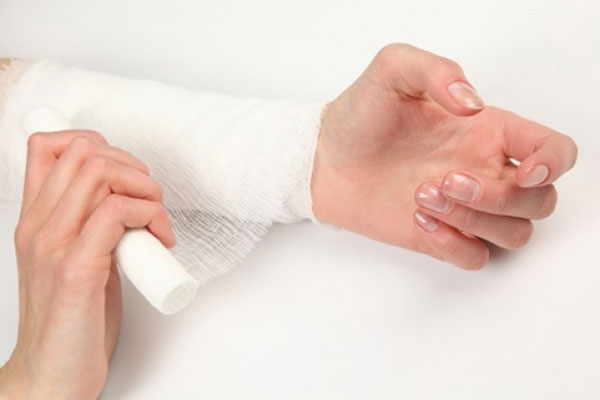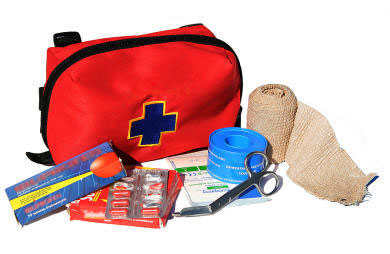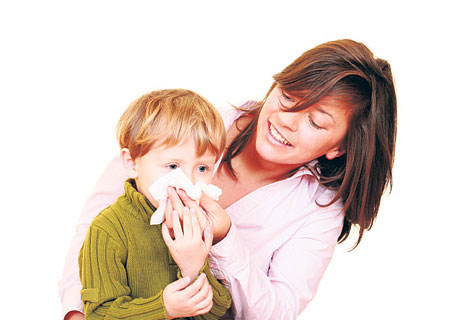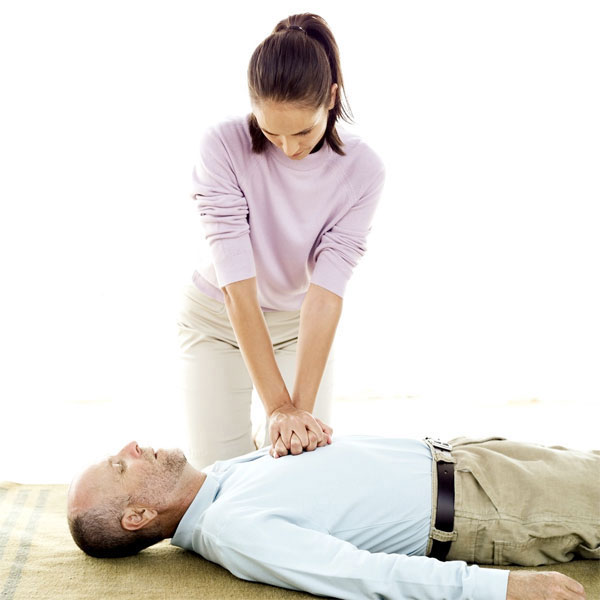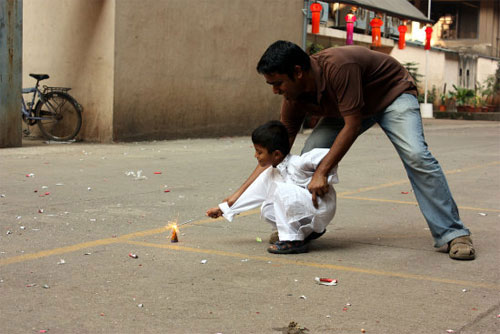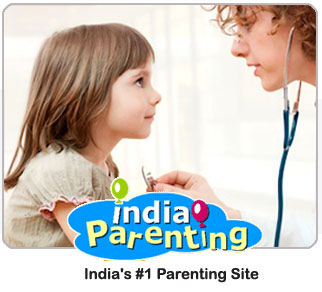Children are constantly bumping and bruising themselves. All it takes is one fall too hard, and your child just might end up with a broken bone. One out of five people has a fracture at some point of time in their lives, and the maximum of these fractures occur during childhood. Here are some first aid tips, which you should memorise, just to be on the safe side. In this articleWhat is a dislocation?Fractures are of two kindsHairline fractureCompound fractureDo NOT move the injured limbLeg FractureHand FractureBleedingRememberHow can you tell if its a fracture or a sprain? The pain is less intensive in a sprain than in a fracture, but never make the mistake of underestimating your childs pain. It takes a doctor to differentiate between the two, which is why the same kind of first aid is administered in both cases. What is a dislocation? A dislocation is when the bone has come out from the socket. This also results in acute pain, swelling, an inability to carry any weight and an inability to move the injured limb. The first aid administered in case of a dislocation is also the same. Fractures are of two kinds: Hairline fracture A hairline fracture is just when the bone gets a CRACK that goes through it. Such fracture still cause immense pain, but at least chances of an operation are less. Compound fracture A compound fracture is one in which the bone completely breaks apart pops out through the skin. Ouch! This is the worst kind, and it may result in loss of blood as well. If your child has had a bad fall, and you feel it may be a fracture, you should call a doctor, preferably an orthopedic surgeon, immediately. Heres what you can do by way of administering first aid. Do NOT move the injured limb The first step to be taken is to immobilise the limb. It should not be moved at all. Use any handy material to immobilise the limb. You could use a magazine or newspaper for support, and make a sling with the help of some cloth, a rope or shoelaces. Leg Fracture If your child has fractured his leg, carefully straighten it out. Call for an ambulance and in the meantime, secure the leg so it doesnt move. Apply two splints, one on the inner leg from the foot to the inner thigh, and the other, on the outside, from the foot to the armpit. Secure the splints well. Do NOT move your child until his leg has been completely immobilised. You could even tie both legs together for added support. Hand Fracture The hand should be moved to a 90-degree angle and kept close to the chest. It should be immobilised in this position. Move the hand as gently as possible, and if the pain is too intense, do not move it at all. Bleeding If your child is bleeding, you should treat the bleeding first. Stop the bleeding by first cleaning it carefully with an antiseptic, and then by applying a sterile dressing. Do not bandage tightly over the injury site. Apply a clean dressing gently over the wound. Remember Keep RICE in mind, as a first aid treatment for all fractures, sprains and dislocations. RICE stands for Rest, Ice, Compression and Elevation. Rest Give plenty of rest to the immobilsed limb. Move it as little as possible so that there is no strain. Ice Apply ice to the injured area. No heat treatment or massage should be given. Use an ice pack or wrap up some ice cubes in a damp towel and apply it to the injured area. You could also use anything frozen such as a packet of frozen peas. Do not massage the injured area, and dont apply any ointments like Iodex. Compression Wrap up the injured area with a crepe bandage if possible, or use any clean, fresh cloth available. Wrap it as tight as is comfortable. However, ask the doctor before bandaging the area. This will relieve the pain somewhat. Elevation The injured limb should preferably be raised above the level of the heart. This could be done with the help of a pillow while sleeping.
Children are constantly bumping and bruising themselves. All it takes is one fall too hard, and your child just might end up with a broken bone. One out of five people has a fracture at some point of time in their lives, and the maximum of these fractures occur during childhood. Here are some first aid tips, which you should memorise, just to be on the safe side.
How can you tell if it's a fracture or a sprain?
The pain is less intensive in a sprain than in a fracture, but never make the mistake of underestimating your child's pain. It takes a doctor to differentiate between the two, which is why the same kind of first aid is administered in both cases.
What is a dislocation?
A dislocation is when the bone has come out from the socket. This also results in acute pain, swelling, an inability to carry any weight and an inability to move the injured limb. The first aid administered in case of a dislocation is also the same.
Fractures are of two kinds:
Hairline fracture
A hairline fracture is just when the bone gets a CRACK that goes through it. Such fracture still cause immense pain, but at least chances of an operation are less.
Compound fracture
A compound fracture is one in which the bone completely breaks apart pops out through the skin. Ouch! This is the worst kind, and it may result in loss of blood as well.
If your child has had a bad fall, and you feel it may be a fracture, you should call a doctor, preferably an orthopedic surgeon, immediately. Here's what you can do by way of administering first aid.
Do NOT move the injured limb
The first step to be taken is to immobilise the limb. It should not be moved at all. Use any handy material to immobilise the limb. You could use a magazine or newspaper for support, and make a sling with the help of some cloth, a rope or shoelaces.
Leg Fracture
If your child has fractured his leg, carefully straighten it out. Call for an ambulance and in the meantime, secure the leg so it doesn't move. Apply two splints, one on the inner leg from the foot to the inner thigh, and the other, on the outside, from the foot to the armpit. Secure the splints well. Do NOT move your child until his leg has been completely immobilised. You could even tie both legs together for added support.
Hand Fracture
The hand should be moved to a 90-degree angle and kept close to the chest. It should be immobilised in this position. Move the hand as gently as possible, and if the pain is too intense, do not move it at all.
Bleeding
If your child is bleeding, you should treat the bleeding first. Stop the bleeding by first cleaning it carefully with an antiseptic, and then by applying a sterile dressing. Do not bandage tightly over the injury site. Apply a clean dressing gently over the wound.
Remember
Keep RICE in mind, as a first aid treatment for all fractures, sprains and dislocations. RICE stands for Rest, Ice, Compression and Elevation.
Rest Give plenty of rest to the immobilsed limb. Move it as little as possible so that there is no strain.
Ice Apply ice to the injured area. No heat treatment or massage should be given. Use an ice pack or wrap up some ice cubes in a damp towel and apply it to the injured area. You could also use anything frozen such as a packet of frozen peas.
Do not massage the injured area, and don't apply any ointments like Iodex.
Compression Wrap up the injured area with a crepe bandage if possible, or use any clean, fresh cloth available. Wrap it as tight as is comfortable. However, ask the doctor before bandaging the area. This will relieve the pain somewhat.
Elevation The injured limb should preferably be raised above the level of the heart. This could be done with the help of a pillow while sleeping.












